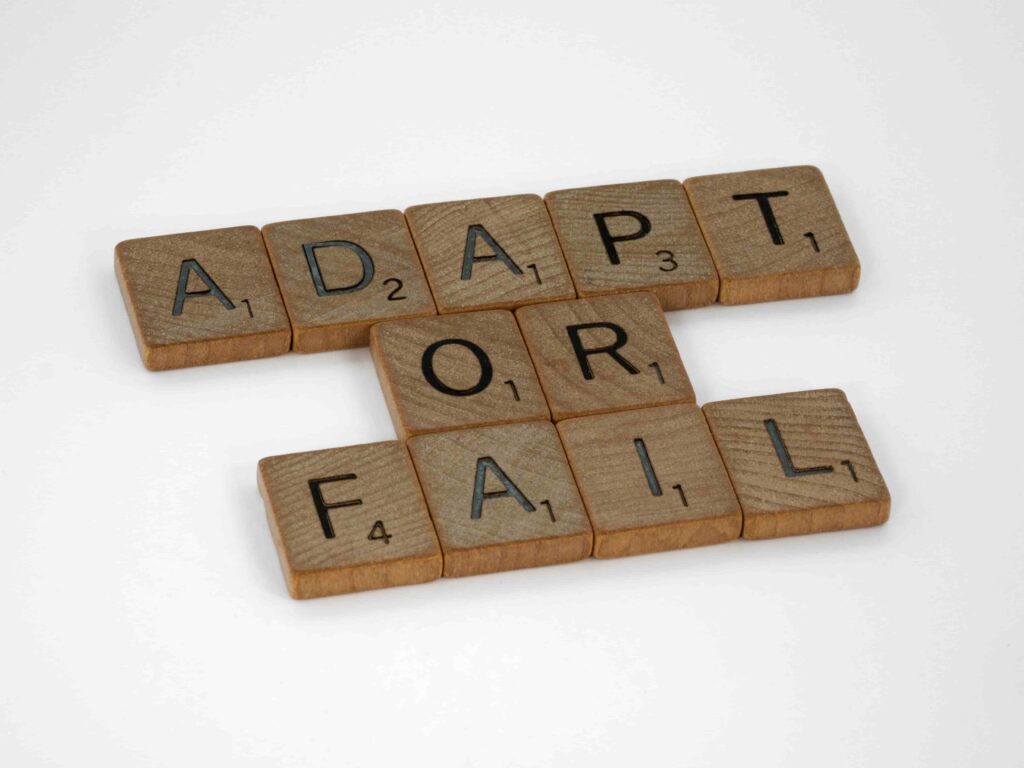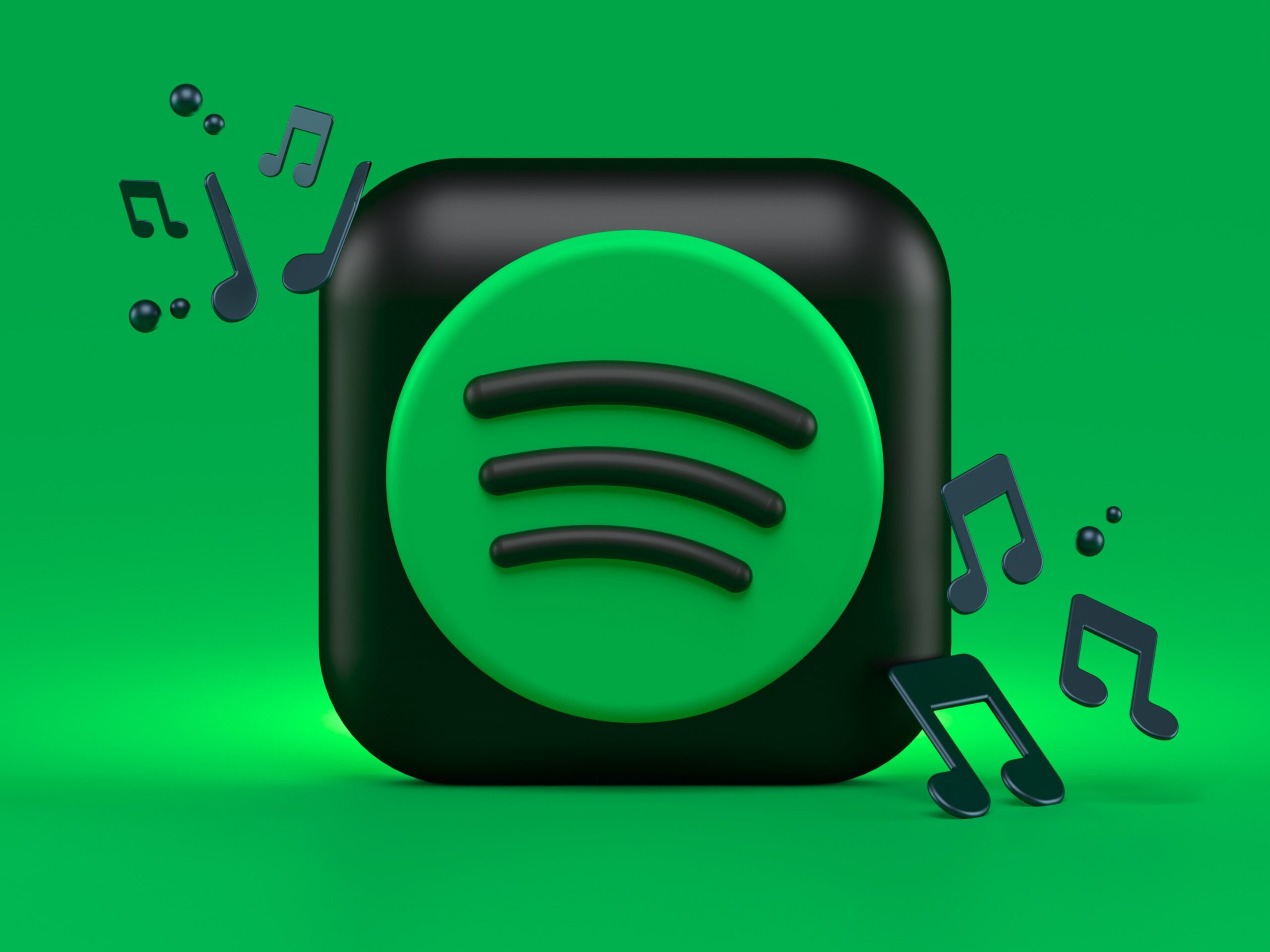Decoding the Spotify Model: Unraveling Squads, Tribes, and Guilds
In the realm of project management, there are countless ways to structure Agile teams. However, before delving into the various grouping terms like squads, tribes, chapters, and guilds, it’s crucial to understand the underlying purpose of these groups.
A strong team culture is a fundamental factor in ensuring the success of any project. As the legendary baseball player Babe Ruth once said, “The way a team plays as a whole determines its success. You may have the greatest bunch of individual stars in the world, but if they don’t play together, the club won’t be worth a dime.” The same principle applies to Agile teams.
For instance, a Scrum team may boast the world’s best UX specialist, but without effective collaboration with other team members, the ability to deliver top-notch software diminishes. The Agile Manifesto emphasises the significance of teamwork, advocating for motivated, self-organising teams that communicate regularly and strive for continuous improvement. Building the perfect squad, therefore, requires project managers to invest time in selecting their team members wisely.
In the pursuit of effective team organisation, one source of inspiration for project managers is the Spotify model, which structures teams into squads, tribes, chapters, and guilds. Let’s take a closer look at these groups and explore their functionalities in greater detail.
Why Should A Team Reorder?
Building a flexible, high-quality product that can swiftly respond to market demands is undeniably important. However, for me, having an organisational process that mirrors these qualities is equally crucial. It’s not just about fixing the product; it’s about fixing the process too.
Looking at real-life examples of companies that have failed, those burdened by legacy technology, and those embracing change and innovation, the image speaks volumes. Scalability stands out as one of the key reasons for success or failure. As a company grows, it must be able to expand effortlessly and without unnecessary pain, particularly in smaller companies. During the early stages of a startup, roles are often vague, and people wear multiple hats to get things done quickly. While this approach is acceptable in the beginning, it becomes unsustainable as the company grows.
Conflicts arise, and people begin stepping on each other’s toes, often resolved only by clearly defining roles and responsibilities. Scrum, a framework that advocates for feature teams with full autonomy and end-to-end responsibility, is widely used to address such challenges.
Notably, Spotify has become the poster boy for Agile and has successfully implemented this model, calling their development teams “Squads,” a clever way to break the stereotype that a Development Team should only consist of developers. Other companies have also adopted this naming convention, using terms like Crew, Party, Unit, Faction, Troop, and Lineup.
While renaming teams alone won’t automatically enhance their effectiveness, it can prove beneficial when making organisational changes or transitioning from a waterfall approach to Scrum. It helps detach from the old ways of doing things and can make the changes more impactful.
The Spotify Model
Spotify, the renowned music streaming platform, has become a global powerhouse since its founding in 2006. Sharing the stage with tech giants like Apple, Microsoft, and IBM, Spotify has embraced the Agile methodology, propelling its success even further.
In 2012, Spotify unveiled the “Spotify model” through a whitepaper titled “Scaling Agile @ Spotify,” authored by Henrik Kniberg and Anders Ivarsson. The whitepaper aimed to shed light on how the company effectively organises its teams and sustains an Agile mindset, serving as a guiding beacon for other organisations seeking to adopt similar approaches.
The outlined model introduced six key groups that form the foundation of Spotify’s Agile organisation:
Squads

At Spotify, a squad constitutes a close-knit team comprising typically six to twelve individuals dedicated to a long-term mission. Operating with a high degree of autonomy, these teams navigate through various stages of software development. Remarkably, Spotify grants squads the freedom to select their preferred project management methodology, whether it’s Scrum, Kanban, or another suitable option.
While no formal leader is assigned, a product owner takes on the role of prioritising the squad’s tasks, ensuring alignment with broader objectives while refraining from direct involvement in the day-to-day working process. Additionally, each squad benefits from the guidance of an Agile coach, who offers valuable insights and support throughout the project’s duration.
You can learn more about creating a great team for your startup here.
Tribes
Within the Spotify framework, a tribe is formed by a collection of squads operating in interconnected fields. To ensure effective communication and cohesive dynamics, the tribe comprises no more than 100 members, aligning with the concept of Dunbar’s number. This idea proposes that stable social relationships become challenging to maintain in groups exceeding 100 individuals. At the helm of each tribe stands a dedicated tribe lead, whose primary role revolves around nurturing productivity and fostering innovation across the various squads.
The power of the tribe comes to life through regular gatherings, providing an opportunity for members to exchange updates, share valuable insights, and showcase newly developed products. This collaborative environment empowers teams to work synergistically, driving creativity and mutual support within the tribe’s vibrant ecosystem.
Chapters

In the Spotify model, a chapter represents a group of individuals who possess similar skill sets and contribute their expertise within the same tribe. Guided by a line member who is also an active squad participant, the chapter collaborates across various squads, leveraging their specialised knowledge to enhance the overall performance of the organisation.
To ensure seamless coordination and knowledge exchange, Spotify chapters conduct regular meetings where they delve into their specific domains. These gatherings foster a collaborative atmosphere, facilitating the sharing of best practices, innovative ideas, and continuous learning, ultimately elevating the collective capabilities of the entire chapter community.
Guilds
In the Spotify model, a guild represents a broader community of like-minded individuals who share common interests and passions. Unlike chapters, which operate within a single tribe, guilds encompass members from multiple tribes. Uniting these diverse talents is the guild coordinator, responsible for fostering cohesion and facilitating knowledge exchange among the guild’s diverse members.
Spotify’s guilds are meticulously designed to promote cross-functional interaction, enabling members from various areas to come together and share their valuable insights, expertise, and best practices. These collaborative forums prove invaluable in maintaining an Agile philosophy as Spotify’s developer headcount continues to expand rapidly.
Trio

The TPD Trio, also known as the Trio, comprises the Tribe Lead, Product Lead, and Design Lead. Within every Tribe at Spotify, this trio collaborates to ensure seamless alignment between three essential perspectives when tackling feature areas and projects.
By having this Triangular Alignment in place, Spotify ensures that the Tribe’s efforts are harmonised with a shared vision, combining the expertise and insights of the Tribe Lead, Product Lead, and Design Lead. This coordinated approach fosters effective communication and decision-making, ultimately enhancing the Tribe’s ability to deliver successful and impactful outcomes.
Alliance
As organisations grow and expand, the need for seamless cooperation between multiple Tribes becomes evident. To address this, Spotify introduces Alliances – a combination of Tribe Trios, typically comprising three or more Tribes, working together to achieve goals that surpass the scope of any single Tribe.
The strength of Alliances lies in their ability to foster collaborative efforts, uniting diverse expertise and resources to tackle ambitious objectives. Unlike rigid practices or ceremonial frameworks, the Spotify model emphasises how teams organise themselves around their work. While Squads may adopt ceremonies like sprint planning and retrospectives, the focus remains on empowering Squads to determine the most effective approach to accomplish their tasks and meet their goals autonomously.
Benefits of The Spotify Model
Spotify embarked on a journey to revolutionise the way they scaled Agile, aiming to empower Squads to excel in speed, swift software delivery, and minimal overhead. As they evolved their model, the company reaped numerous benefits, surpassing their initial expectations. The implementation of the Spotify model brought forth a range of organisational advantages, including:
Informal Processes
At the core of the Spotify model lies a focus on organising around work, rather than rigidly dictating processes and ceremonies. This deliberate approach grants organisations enhanced flexibility in how their Squads operate. Unlike imposing a strict methodology (e.g., mandating Scrum), the emphasis is on fostering alignment among Squads and empowering them to pursue individual team outcomes.
By allowing Squads the freedom to determine their work methods and tools, the Spotify model encourages a culture of autonomy and ownership. The overarching goal is to unite teams towards shared objectives, enabling them to collaborate seamlessly and achieve collective success, all while respecting their unique approaches and strengths. This adaptable and harmonious structure paves the way for a thriving and agile organisational environment.
More Autonomy and Creativity
The Spotify model fosters a culture of autonomy and creativity by entrusting individuals to complete their work in the manner they deem best. Whether it’s the need to ship software or pivot directions, such decisions are left to the discretion of the Squad. Decentralizing decision-making lies at the heart of this model, with responsibility transferred to Squads, Tribes, Chapters, and Guilds.
By adopting the Spotify model, organisations gain increased transparency into the work being undertaken and embrace a more experimentation-based problem-solving approach within a high-trust environment. This dynamic shift can result in significant advantages, such as the development of superior products, heightened customer satisfaction, and increased employee engagement. However, it is essential to recognise that not every organisation may experience these outcomes uniformly, as the impact may vary based on unique circumstances and contexts.
Difficulties of The Spotify Model

The allure of the Spotify model has driven many organisations to seek similar benefits, leading them to attempt to emulate Spotify’s approach. While some have experienced varying degrees of success, it’s essential to recognise that duplicating Spotify’s achievements entirely is highly unlikely. The reason lies in the fact that an organisation’s current culture and structure significantly impact the model’s implementation.
Although the Spotify model may seem straightforward, the environment in which it is applied is intricate and multifaceted. Attempting to copy it without considering the cultural elements necessary for its success is a common mistake. While it might resemble a matrix organisational structure on the surface, the key lies in cultivating critical cultural aspects such as trust and autonomy. Without these essential behavioural shifts and a shift in culture, the true benefits of the Spotify model will remain elusive. Simply renaming teams as Squads is akin to putting lipstick on a pig – a superficial change without addressing the core principles that underpin the model’s success.
Is The Spotify Model Right For Your Agile Team?
For organisations seeking to scale Agile effectively, the Spotify model serves as a valuable source of inspiration. Its appeal lies in its simplicity, offering a flexible path for teams to tailor their work methods according to their unique culture. Emphasizing self-management and fostering innovation, it aligns harmoniously with the core benefits of Agile, including enhanced customer satisfaction, improved product quality, and increased adaptability.
Despite its attractiveness, some Agile professionals express concerns about directly implementing the Spotify model as a rigid organisational framework. Henrik Kniberg himself, one of the model’s creators, clarifies that it was never intended as a one-size-fits-all solution for all organisations. Rather, it was an illustration of how Spotify operated in 2012, representing its individual approach to scaling Agile. The whitepaper itself highlights the ongoing evolution of Spotify’s way of working, emphasising that it is a dynamic journey, not a definitive destination.
In the words of professional Scrum trainer Kate Hobler, replicating the Spotify model in another company can be likened to attempting a kidney transplant from a total stranger. While there’s a possibility of success, the odds are slim, akin to winning a lottery. The crucial takeaway is that the Spotify model is tailored to Spotify’s specific context and should not be viewed as a ready-made solution for every organisation. Instead, each company may require a more tailored and context-specific approach to scaling Agile effectively.
The Spotify Model Best Practices

If your goal is to foster a culture characterised by trust, autonomy, and continuous learning, the Spotify model stands as an exceptional source of inspiration. As your organisation explores the possibility of adopting the Spotify model to approach Agile at scale, here are some key best practices to bear in mind:
Adapt, Don’t Copy
Take the time to delve into the structure, practices, and mindset that underpin Spotify’s approach. Seek to truly understand the essence of their model. Once you have a comprehensive grasp, adapt and tweak the aspects that align with your own environment and organisational context.
Remember, the objective is not to replicate Spotify entirely but rather to leverage their model as a framework to enhance collaboration and effectiveness within your organisation. Let Spotify’s approach serve as a catalyst for positive change, empowering your teams to work together more efficiently and achieve greater success.
Be Autonomous
Spotify’s success in pivoting swiftly can be attributed to the significant autonomy granted to their teams. One key aspect of this autonomy is the freedom to choose their own development tools and even modify code from other teams. Within your organisation, it is essential to evaluate whether certain decisions can be entrusted to the teams rather than dictated by disconnected entities within the organisation.
By empowering teams with decision-making authority, you enable them to respond more adeptly to challenges and changes. This decentralised approach fosters a culture of ownership and innovation, ultimately leading to greater agility and adaptability. Embracing this model, you can unlock the potential for more efficient and effective collaboration within your organisation.
Be Transparent
Spotify’s remarkable success is a product of their unwavering dedication to fostering community and transparency within their work culture. As you embark on adopting the Spotify model, consider creating your first Guild to lead the way. Encourage active participation from every member of your organisation, promoting a sense of ownership and commitment to the model’s implementation.
Central to this process is building trust among team members. Establish transparent and inclusive channels for gathering feedback, ensuring that every voice is heard and valued. Through open dialogue and collaborative decision-making, you can achieve alignment on the organisation’s desired future work dynamics. By embracing community, transparency, and trust, you set the stage for successful and meaningful implementation of the Spotify model, ultimately paving the way for enhanced teamwork and organisational growth.
Accept Mistakes
In this journey of growth, it’s natural to encounter stumbling blocks and challenges, and that’s perfectly okay. Improvement entails experimentation and drawing valuable lessons from both our triumphs and setbacks. Spotify itself underwent numerous iterations before shaping the model we recognise today, and they continue to explore new avenues for enhancing their work methodologies. Encourage a similar spirit of experimentation and continuous improvement within your organisation.
By prioritising these practices, you will witness positive impacts on how your organisation collaborates and aligns, regardless of whether you follow the Spotify model as a guide. The key lies in fostering a culture of learning and adaptability, where teams are empowered to explore innovative approaches, grow from experiences, and collectively thrive. Embrace the journey wholeheartedly, knowing that each step forward, even amid occasional missteps, contributes to the evolution and progress of your organisation.
How Can I Build My Own Agile Team Model?
To build your Agile team model, begin by seeking inspiration from Spotify’s group design. Perhaps you admire the concept of squads but find tribes or guilds less suitable for your organisation. Tailor the team structure to align with your specific needs, incorporating what resonates and disregarding the rest.
Embrace the value of autonomy, a key feature of the Spotify model that fosters a positive atmosphere where teams can self-organise effectively and nurture their creativity. If you’re considering a hybrid approach, blending practices from various models and methodologies, avoid being too prescriptive and grant your teams the freedom to work in ways that suit them best.
Above all, pay close attention to your organisation’s unique culture. Identify and prioritise the cultural elements you wish to retain and weave them into your Agile team model. By staying true to your organisation’s identity, you can create a harmonious synergy between Agile practices and your company’s values, promoting a successful and authentic implementation of your tailored Agile team model.
See our complete guide to creating an agile team if you are interested in learning more.
Overview
In this blog post, we have delved into the remarkable Spotify Agile model, an approach that has redefined software development and team organisation. By examining its fundamental principles and key components, we gain insight into what makes this model exceptional and effective. Spotify’s emphasis on fostering collaboration, autonomy, and continuous improvement has cultivated a culture of innovation and adaptability within their teams. This dynamic approach serves as a source of inspiration for organisations seeking to thrive in the ever-evolving world of Agile software development.
If you’ve enjoyed this post, we’d recommend diving into the following other posts in this Agile series:
- An Introduction to The Agile Methodology
- Themes, Epics and User Stories – The Core Components Of Agile
- Embracing Agile Team Dynamics
- What is SAFe Agile and Why Should I Use It?
- What is Waterfall Development?
- What is Lean Development?
- What is Scrum?
- A Deep Dive Into Epics
- Exploring The Power of User Stories
- How Can I Use Personas?
- Decoding Agile Estimation (Story Pointing)
- Agile Transformation: How Can My Business Start Using Agile?
- The Spotify Approach To Agile Development
- What Is Agile Portfolio Management?
- Agile Glossary
- Agile Statistics







